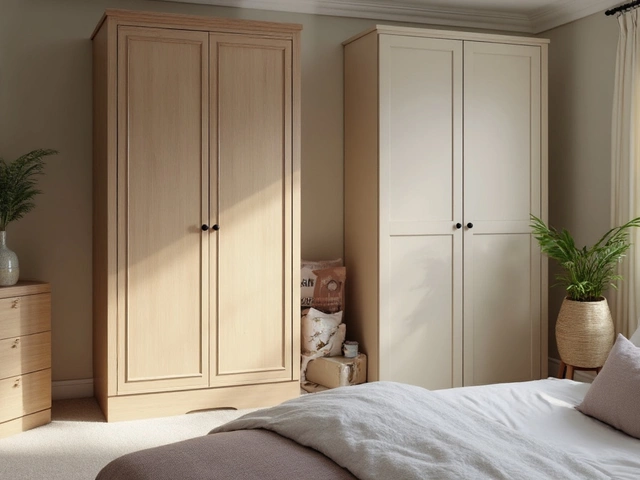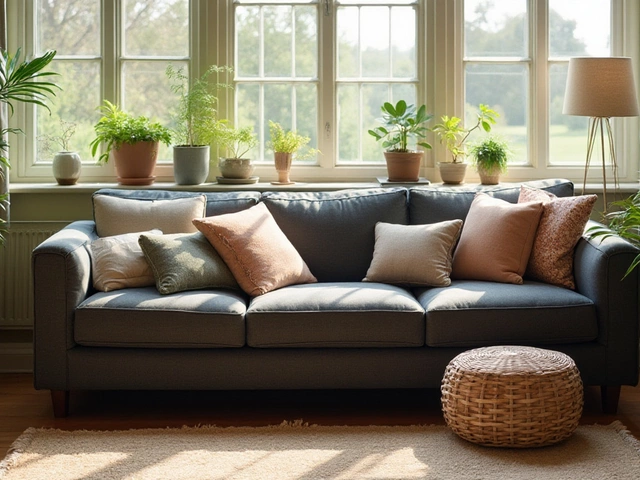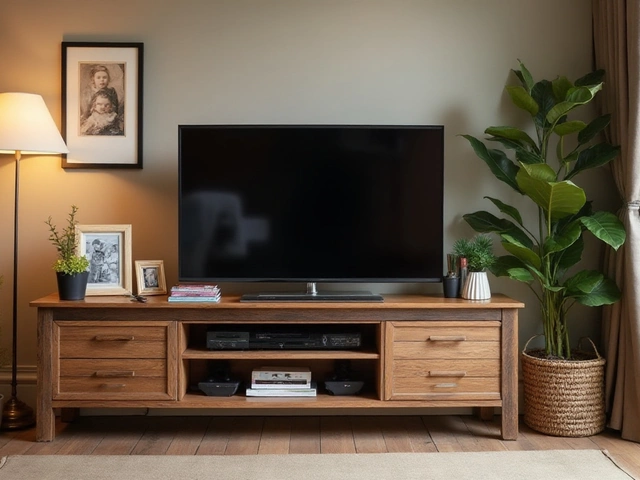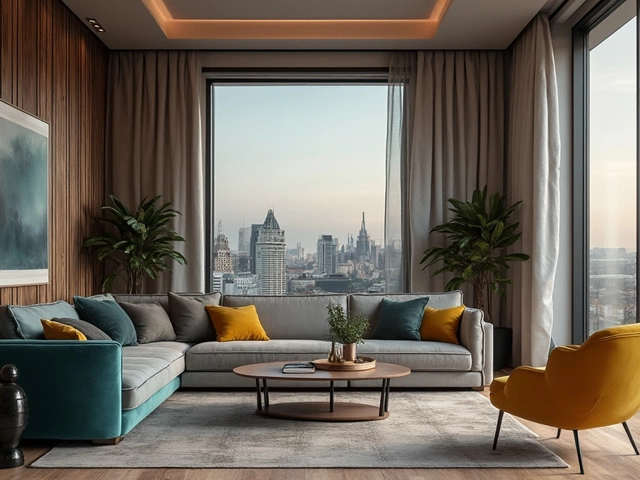Many people find the embrace of a recliner chair to be a sanctuary for relaxation, especially at the end of a long day. Yet, the question remains whether recliners are a viable option for sleeping, particularly concerning the well-being of your back. With countless hours spent contorted in awkward office chairs or hunched over screens, it seems a comfortable recline might just be the antidote—if done right.
By understanding how recliners influence posture and back alignment, one can make informed choices about using them for sleep. Not every recliner is created equal; selecting the right one can make a significant difference in your comfort level and spinal health.
This exploration dives into how recliners uniquely support the body, tips for optimizing your recliner for sleep, and signs that it might be time to look for alternative sleeping arrangements. Gain valuable insights to help you enjoy the cozy comfort of your recliner without compromising your back's health.
- The Anatomy of a Recliner
- Posture and Back Health
- Choosing the Right Recliner
- Tips for Comfortable Recliner Sleep
- When to Seek Alternatives
The Anatomy of a Recliner
At first glance, a recliner might seem just like any other chair. But beneath its plush exterior lies a sophisticated mechanism designed to provide comfort and support. Understanding the anatomy of a recliner is crucial for choosing the right model that can mitigate potential back problems. The typical recliner comprises several key components, including the frame, cushioning, and reclining mechanism. Each of these parts plays a crucial role in how it supports your body during relaxation or sleep. The frame, often constructed from materials such as hardwood or metal, forms the backbone of the recliner, determining its durability and stability. The quality of the frame is paramount, as it must withstand the weight and movement of being in a reclined position regularly.
Diving deeper, the cushioning provides the soft interface between your body and the chair. Different recliners offer varying densities of foam or even memory foam for added comfort. This layer needs to balance softness with support, ensuring that while it conforms to the shape of your body, it does not lose the ability to prop up the spine correctly. Proper cushioning helps in the equal distribution of your body weight, which can be crucial for maintaining good posture and preventing back pain. The reclining mechanism often involves levers or electric controls. This system allows the chair to adjust to multiple positions, providing the opportunity to elevate the feet or fully recline. Interestingly, studies suggest specific recline angles can distribute body pressure more evenly, thus alleviating stress on the spine.
"A reclined position at around 135 degrees is considered optimal for reducing spinal pressure," notes Dr. Robert L. Butler of Butler Wellness Studies.
Additionally, contemporary recliners sometimes incorporate ergonomic features such as adjustable headrests and lumbar support, allowing for customized comfort that luxurious movie theaters envy. Such features can significantly impact the suitability of a recliner for sleep as they cater to different body shapes and sizes, providing a tailored fit. The style of the recliner also influences its overall impact on health. Traditional recliners may have a large footprint and bulky build, but newer models offer sleeker designs that incorporate advanced ergonomic technology. These innovations not only enhance comfort but are also specifically designed to align with the natural curves of the spine.
When shopping for a recliner, proper cushioning and an adaptable system are key. While high-quality recliners might represent a more substantial investment, they can pay off by safeguarding your back health and offering a restful alternative to a conventional bed. Sometimes, it’s worth considering the addition of extra features such as heat and massage functions, aimed to further relax the muscles and improve circulation. Understanding these intricacies allows informed decisions, balancing between aesthetics, comfort, and beneficial sleep postures.
Posture and Back Health
Maintaining proper posture is crucial for keeping your spine healthy and your back free of pain. When you think about using a recliner chair for sleeping, you might wonder just how it affects your body throughout the night. The natural curve of your spine acts like a shock absorber, distributing stress evenly across its length when aligned correctly. A recliner can provide good support if designed with back health in mind. However, not all recliners contribute positively to maintaining spinal alignment.
Impact of Recliner Posture
The conforming shape of a recliner helps support the back almost like a custom-fitted glove around your frame. If adjusted appropriately, especially at the lumbar area, users might find a blessed release from tension and pressure. It's advisable to recline at about 110 to 130 degrees, which some orthopedic specialists recommend to reduce pressure on the spine. Yet, if poorly designed, or if your recliner is too angled or lacks lumbar support, it could lead to sustained periods of slumped spine posture. This could lead to a curvature issue called kyphosis, or a more commonly feared impact—chronic lower back pain.
Key Features for Back Support
Choosing the right recliner means looking for specific features that can boost your back health. Consider recliners that offer adequate padding along the contour of your spine, particularly at the lumbar level. Memory foam and ergonomic designs can work in harmony to maintain the spine's natural curve. While purchasing, you might also look for motorized recliners that provide adjustability in fine increments for customized seating positions. Some recliners allow you to elevate your legs in line with your heart, reducing stress on the lower back by improving circulation.
"Sitting for prolonged periods, especially in immobile or fixed positions, can have significant negative impacts on your back posture," warns Dr. Anne-Marie Olsen, renowned orthopedic specialist.
It's essential to actively think about changing positions, even while sleeping, as prolonged sedentary posture in a recliner might pose musculoskeletal challenges. You might want to adjust the angle every few hours and try shifting your weight from side to side slightly to mitigate these risks.
Does It Help to Relieve Back Pain?
Interestingly, for some individuals with specific ailments like sleep apnea or GERD, sleeping in a reclined position might actually prove beneficial. The elevation can help keep airways open, and the angled position might alleviate irritating symptoms. While many swear by their recliner for pain relief, remember this isn't a one-size-fits-all. If you start experiencing unusual discomfort or if the pain persists, it might be a cue to rethink your sleeping arrangement or consult a healthcare professional. Some suggest combining recliner sleeping with therapeutic exercises to strengthen the back muscles, focusing on core stability.
To sum it up, while sleeping in a recliner can sometimes offer relief and comforting ease, it's essential to pay attention to body signals. Your back's comfort and health should remain a primary priority. By staying informed and making conscious decisions, you can ensure your recliner time remains enjoyable yet safe.
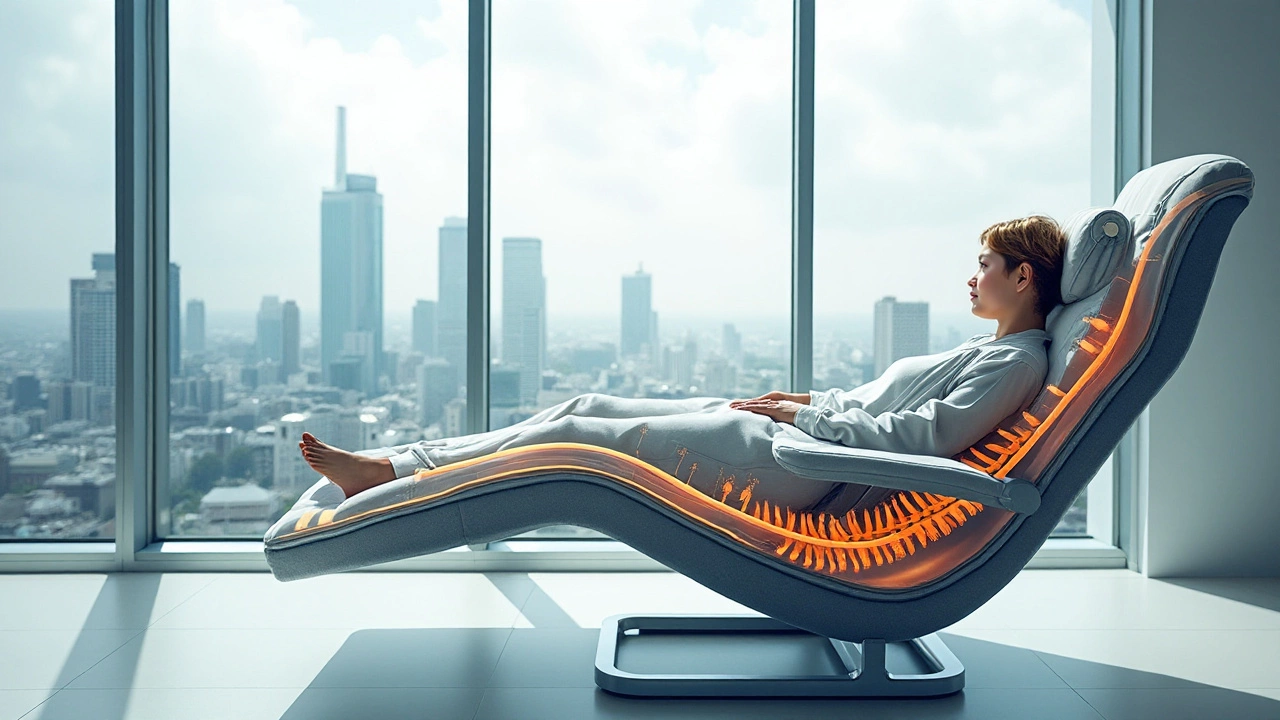
Choosing the Right Recliner
Finding the perfect recliner chair can be a transformative experience that drastically affects your comfort and wellness, especially if you’re considering it as a sleeping option. Not every recliner suits every individual, and it is crucial to remember that personal preference plays a significant role. Start your journey by understanding the kinds of recliners available and the particular features each offers. You’ll find models that vary widely from basic designs to sophisticated ones with massage and heat options. Knowing what’s out there is half the battle won.
Material is an important consideration in selecting your recliner. Fabric seats might offer breathability, while leather or synthetic leather options could provide a luxurious feel but might trap heat. Think about how much maintenance is involved; leather requires regular cleaning and conditioning, for instance. It’s not just about initial comfort but how the recliner performs over time. Consider the support the seat offers. Does it have a strong lumbar support that maintains the spine's natural curve? If not, prolonged use may lead to aches even if it feels comfortable at first.
Features to Look Out For
When we talk about features, we're not merely addressing bells and whistles like integrated cup holders or sound systems. While these can add convenience, the mechanics of how the chair reclines are paramount. Look for chairs with customizable options; they should have several positions instead of merely sitting and reclining. Motorized versions may offer a greater range but check the noise level when they recline, especially if you’ll be using it for sleep.
The footprint of the recliner is another aspect you'll want to evaluate. Measure the space where you’ll place this chair, both when upright and fully reclined, to ensure it fits comfortably without crowding the room. Another aspect often overlooked is the recliner’s weight rating; some have specific weight limits to ensure their longevity and functionality.
Expert Opinions on Choosing the Right Recliner
Speaking with those in the industry can often yield valuable insights. Simon Roberts, a renowned physiotherapist, once remarked:
"Innovation in recliner chairs has come a long way, but people sometimes overlook factors like ease of use or adjustability, which are crucial for anyone intending to spend prolonged periods in one."His advice accentuates the need to consider ergonomics seriously. Pay attention to the ease of getting in and out of the chair, especially if you have mobility issues.
Before purchasing, spend time testing the recliner. Many retailers offer a trial period—use it. Sit in multiple positions, test the footrest, and mimic your usual activities like reading or watching TV. If it isn’t comfortable in the store, it likely won’t be at home either. Just as crucial is to grasp the warranty terms; recliners are long-term investments, and understanding coverage for potential defects or parts replacement can save you headaches down the line. By factoring these elements into your decision-making process, you're on a solid path to finding a recliner that provides both relaxation and support.
Tips for Comfortable Recliner Sleep
Settling into a recliner chair for sleep might not be as instinctive as dozing off in a regular bed, but with the right adjustments, it can become a soothing rest spot. One key consideration is the inclination angle. Many experts suggest a recline angle of 135 degrees as it offers the best postural support, minimizing spinal pressure. A study by the British Chiropractic Association highlights that this angle is beneficial for reducing spinal impact compared to sitting upright.
Pillow placement is another critical factor. Use a small cushion behind your neck to maintain proper cervical spine alignment, while another pillow can be tucked under the knees to help alleviate lower back pressure. This leg support helps to distribute weight more evenly across the body, which can be crucial in maintaining comfort throughout the night. For those with specific ailments like acid reflux or sleep apnea, sleeping in a recliner may even present advantages, as it naturally elevates the upper body, aligning well with sleep needs for these conditions.
According to Dr. Andrew Wellnes, a notable orthopedic specialist, "While recliner sleeping isn't traditional, it can offer essential benefits for those struggling with back issues if done with proper support."
Consider the material of your recliner, too. Breathable fabrics or those with advanced cooling technology can prevent overheating, keeping you comfortable all night long. On colder nights, a lightweight blanket can suffice without adding bulkiness that might disrupt a balanced position. It's essential to ensure that the recliner chair itself is in good condition; examine the mechanical components regularly to avoid any malfunctions that might interrupt your rest.
If you're sharing the recliner space with a furry friend or tend to toss about during sleep, consider adding side guards or a secure sleeping bag to prevent falls. Although recliner sleep may not suit everyone, these steps can enhance comfort for many seeking an alternative to traditional beds. Specifically, lightweight electric recliners provide effortless adjustment controls for those who may need to tweak their angle multiple times during the night, accommodating personalized comfort requirements.
Many users have reported enhanced sleep quality when combining the recliner with technology like white noise machines or sleep masks. These additions can create a serene sleep environment, masking disruptions and promoting relaxation. Evaluate your sleep after each recline to identify any adjustments needed. Should you find persistent discomfort, consulting with a healthcare provider or sleep specialist might offer alternative strategies.

When to Seek Alternatives
Sleeping in a recliner chair can be a delightful experience, but there are times when it might be wise to consider other options to prevent potential health issues. It's important to listen to your body and understand the signs that indicate your recliner sleep might not be sustainable or beneficial over the long term. If you find yourself waking up with persistent back problems or experiencing discomfort throughout your daily routine, it might be time to reassess. Recliners, while cozy, do not always provide the necessary support for spinal alignment, especially if they're not equipped with ergonomic features.
Chronic pain or discomfort in the morning could mean your spine isn’t receiving the proper support it needs during sleep. Spending too much time on an unsuitable recliner may lead to long-term issues or exacerbate existing conditions like sciatica or herniated discs. Those with pre-existing back problems should be extra cautious about relying on recliners for their night’s rest. Consulting with a healthcare professional can provide guidance tailored to individual needs, ensuring that any shifts in your sleeping habits don't contribute to weakened posture over time.
"Sleep is the golden chain that ties health and our bodies together," said Thomas Dekker, underscoring the irreplaceable role of quality sleep in overall well-being.
If you often have trouble falling asleep in a recliner, this too may be a sign to consider alternatives. The goal of sleep is to rejuvenate, and if your recliner is causing you stress or discomfort, it might counteract that purpose. Look for symptoms such as tossing and turning, inability to find comfort, or waking frequently through the night. While muchas recliners come with compression options to improve circulation, some users might still find their limbs numbed or tingling upon waking. This sensation could indicate a circulation issue that shouldn't be ignored.
Additionally, if you notice pressure points or soreness where your body contacts the chair, consider whether the material might be too firm, lacking adequate padding, or simply not designed for extended use. While asleep, our bodies crave a cradle of support—a space where stress is relieved, not compounded. For some, traditional horizontal sleep still may be indispensable. If back problems persist despite adjustments to chair settings or positioning, or if a recliner simply doesn’t quite mesh with your physical demands, a specialized mattress designed for therapeutic support could be a worthwhile investment.
Exploring Other Sleeping Options
Finding a suitable alternative may involve trying out various options. Look into adjustable beds as they blend the ease of a recliner with a mattress's full-body support. Futons or high-quality sofa beds might provide a refreshing change as well. Their versatility can afford you the best of both worlds—functioning as a supportive sleeping platform at night and a stylish seating option during the day. Researching beds with customizable firmness settings could also aid in finding your optimal sleeping environment, ensuring that your body receives the right amount of pressure relief align with proper alignment.
Remember, maintaining a healthy sleeping routine is essential for good physical health. This doesn't just nourish your back but improves cognitive functions and emotional well-being, reducing stress levels. Monitoring your sleep quality and remaining open to alternatives can help you make choices that truly enhance your life.


